Application
equipment
In this section you will find a range of practical information related to our solutions. In the articles, we share our experience, discuss implementation steps and highlight good practices. It is a reliable source of information and advice on the provision of drinking water in public spaces, the legal regulations in this area, the benefits of installing drinking water dispensers and the technological aspects in this field.
We look forward to reading!

Drinking water, a fundamental resource essential to life, is increasingly becoming a central topic in discussions about public health and citizens' quality of life. In response to these issues, the European Union has adopted Directive 2020/2184, which requires member states to provide access to drinking water in public spaces. Within this directive, waterholes are cited as one of the solutions to meet this obligation.
Directive 2020/2184 is an expression of the European Union's commitment to promoting healthy lifestyles and protecting the environment. It is an important step towards guaranteeing citizens' rights to clean and accessible drinking water, wherever they are. The implementation of this directive requires cooperation between different public administrations, local authorities, as well as companies in the water sector.
One of the main solutions given in the directive are drinking water outlets. These can be public fountains, springs, drinking taps in public places, as well as bottle filling stations. Their presence in public spaces aims to provide citizens with easy access to drinking water without having to buy plastic bottles, which in turn contributes to reducing waste and promoting sustainable lifestyles.
The implementation of Directive 2020/2184 not only improves the quality of life of citizens, but also contributes to the protection of the environment. Reducing the use of plastic bottles reduces the amount of waste created by water consumption, which in turn contributes to reducing plastic pollution of our planet.



However, to ensure effective implementation of the Directive, it is necessary to take into account the diverse needs of local communities and to provide adequate financial support to institutions responsible for the provision of drinking water in public spaces. In addition, it is necessary to monitor the quality of the water supplied and to maintain appropriate sanitary standards in the places where it is made available.
The proposal of European Union Directive 2020/2184 on access to drinking water in public spaces demonstrates a commitment to promoting public health, protecting the environment and ensuring equity of access to essential resources. At the same time, it challenges Member States to work together to achieve these goals, bearing in mind the diversity and individual needs of their communities.
Our solutions are a proven way of meeting EU requirements and adapting spaces to the needs of society. The wide range of choices means that they can be perfectly integrated into the surroundings, are resistant to damage and, above all, ensure the distribution of water in a hygienic and convenient manner.
In this section you will find a range of practical information related to our solutions. In the articles, we share our experience, discuss implementation steps and highlight good practices. It is a reliable source of information and advice on the provision of drinking water in public spaces, the legal regulations in this area, the benefits of installing drinking water dispensers and the technological aspects in this field.
We look forward to reading!

Every year on 22 April we celebrate International Earth Day, which serves as a reminder of the need to protect our planet and promotes action for sustainable development. Among the most pressing environmental challenges we currently face, the issue of plastic waste features prominently. Reducing the use of plastic and promoting alternatives is crucial for the future of our planet.
Plastic is ubiquitous in our daily lives, from food packaging to consumer products. Unfortunately, its persistence makes it one of the most serious threats to the environment. Plastic waste pollutes our oceans, forests and rural areas, negatively affecting the health of humans, animals and ecosystems.
Therefore, on a day that is dedicated to the Earth, it is worth considering what actions we can take to reduce the negative impact of plastic on our planet. One key step is to reduce the use of single-use plastic products. Bottles, bags, packaging, straws - these are just some of the products that can be replaced with greener alternatives.
As the years go by, there is a growing public awareness of the problem of plastic waste, leading to more and more action being taken to reduce it. Educational campaigns, bans on single-use plastic, the development of technologies that enable recycling and innovations in replacing plastic with biodegradable materials are just some of the steps being taken around the world.

It is worth emphasising that everyone can contribute to the fight against plastic. Everyday habits such as avoiding single-use plastic products in favour of reusable ones, separating waste or supporting local initiatives to protect the environment can have a significant impact on reducing the amount of plastic entering the environment.
International Earth Day is an excellent opportunity to reflect on our impact on the planet and to take concrete action to protect it. The fight against plastic is one of the key aspects of this concern. By acting together, we can help create a more sustainable future for our planet and future generations.
In this section you will find a range of practical information related to our solutions. In the articles, we share our experience, discuss implementation steps and highlight good practices. It is a reliable source of information and advice on the provision of drinking water in public spaces, the legal regulations in this area, the benefits of installing drinking water dispensers and the technological aspects in this field.
We look forward to reading!

Bottled water, often regarded as a symbol of purity and health, is becoming increasingly exposed to contaminants, including microplastics. While this may seem paradoxical, research shows that microplastic is not foreign even in bottled water, undermining our trust in this source of hydration. To make matters worse, there is evidence that chemicals in microplastic can seep into water, increasing public health concerns.
The presence of microplastics in bottled water can have various sources. One of the main ones is the production process, where microplastic can enter the water during packaging. In addition, contamination can occur during bottle transport or storage in conditions that favour plastic decomposition. Even the label on the bottle can be a source of microplastic if it is made of this material.
Research suggests that microplastic contained in bottled water can have negative health effects. As with other water sources, there is a risk of ingesting microplastic by drinking bottled water, which can lead to its accumulation in the body. Furthermore, chemicals used in the production of plastic, such as phthalates and bisphenol A (BPA), can be released into the water, creating additional health risks.

To reduce the presence of microplastics in bottled water, strict regulations are needed to govern the production, packaging and transport process. Bottled water companies should also invest in filtration technologies that can help remove microplastics from water. In addition, consumers should be aware of the problem and pay attention to the quality of bottled water and the materials used to produce the bottles.
An alternative to bottled water is the use of bottleless water dispensers, which can be further equipped with filtration systems to remove contaminants, including microplastics. In addition, reducing the use of plastic bottles by using reusable bottles or glass bottles can also help to reduce the microplastic problem.
Microplastics in bottled water pose a serious public health risk that requires immediate action. Both bottled water companies and consumers must work together to reduce the presence of microplastic and chemicals in water, thereby protecting health and the environment. Ultimately, consumer education and awareness are key to changing consumer practices and reducing the impact of microplastics on our lives and the environment.
In this section you will find a range of practical information related to our solutions. In the articles, we share our experience, discuss implementation steps and highlight good practices. It is a reliable source of information and advice on the provision of drinking water in public spaces, the legal regulations in this area, the benefits of installing drinking water dispensers and the technological aspects in this field.
We look forward to reading!

World Water Day, celebrated annually on 22 March, reminds us of the extraordinary importance of water for humanity and the need to manage it appropriately. It is a day that focuses attention on issues related to access to clean drinking water, the protection of water resources and the fight against the challenges associated with the lack of access to this fundamental resource.
Water is the basic ingredient of life. Without it, the existence of any form of life on Earth would not be possible. Therefore, caring for its quality and availability is becoming a key issue for the well-being of humanity. One way to manage water resources is to promote the use of drinking water springs and mains water dispensers.
The use of such solutions is not only a health-beneficial habit, but also a way of saving this precious resource and teaching the public about environmentally friendly behaviour. This water is usually subjected to rigorous filtration and purification processes, which guarantees high quality and eliminates the risk of contamination.

Using drinking water sources not only saves us water, but also promotes environmental awareness. It minimises the use of plastic packaging, which translates into less waste production and reduced environmental impact.
On World Water Day, it is worth reflecting on your habits related to the use of this precious resource. We encourage people to choose drinking water sources as their main source of water consumption and to take action to protect and conserve water - not only for our present, but also for future generations.
In this section you will find a range of practical information related to our solutions. In the articles, we share our experience, discuss implementation steps and highlight good practices. It is a reliable source of information and advice on the provision of drinking water in public spaces, the legal regulations in this area, the benefits of installing drinking water dispensers and the technological aspects in this field.
We look forward to reading!

In today's society, more and more attention is being paid to accessibility and facilities for people with disabilities. One of the key elements of daily activity is access to water, both for drinking and personal hygiene. It is therefore important that water sprinklers and dispensers are adapted to the needs of people with different types of disabilities, which can significantly improve their quality of life.
The first major reason for choosing specially adapted water dispensers for people with disabilities is for easier access. People in wheelchairs or with other mobility restrictions may find it difficult to use traditional water dispensers or dispensers. Specially designed dispensers have bowls and pourers as well as activation buttons positioned at an appropriate height for easy access by people who are seated.
Secondly, water sprinklers and dispensers adapted to the needs of people with disabilities are often designed with user safety in mind. They reduce the risk of falls or misunderstandings associated with operating traditional devices. Appropriately placed buttons requiring minimal pressure can be easier to operate for people with limited strength or mobility.
It is also worth paying attention to several important factors when choosing water sprinklers and dispensers for people with disabilities. Firstly, it is important to thoroughly familiarise yourself with local regulations and standards regarding accessibility for people with disabilities in order to select devices that meet the relevant requirements. It is also important to take into account the different types of disabilities and the individual needs of users in order to make the devices as universal as possible.
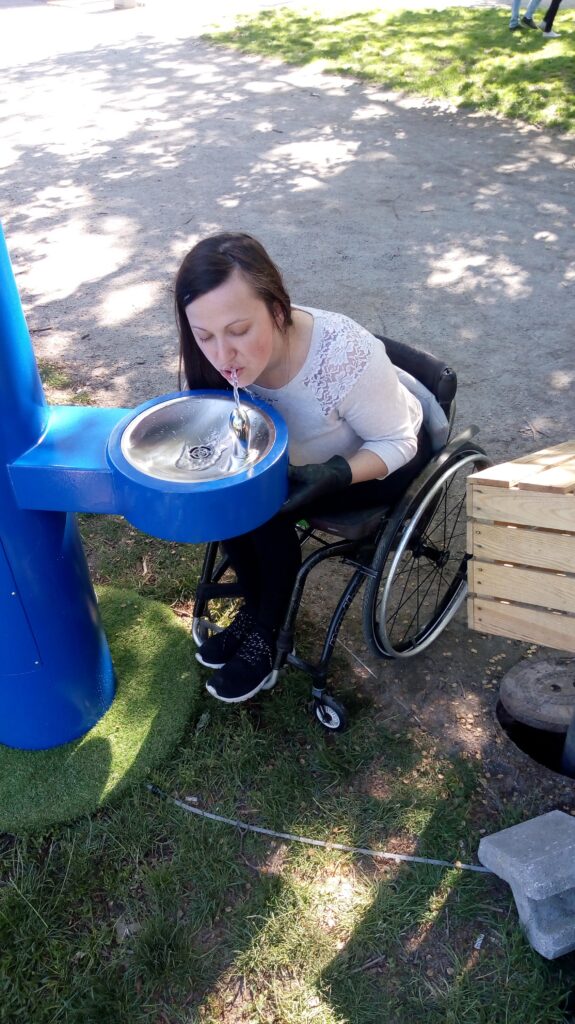


Another important factor is the quality and durability of the equipment. Water sprinklers and dispensers should be robustly made, easy to maintain and resistant to damage and weathering if they are intended for outdoor use. It is also worth paying attention to the ease of installation and maintenance to ensure long-lasting and trouble-free operation of the equipment.
In conclusion, by choosing water sprinklers and dispensers adapted to the needs of people with disabilities, we are not only improving their daily lives, but also contributing to a more accessible society. It is therefore worth taking the time to carefully review the different options and choose the devices that best meet the needs of all users.
In this section you will find a range of practical information related to our solutions. In the articles, we share our experience, discuss implementation steps and highlight good practices. It is a reliable source of information and advice on the provision of drinking water in public spaces, the legal regulations in this area, the benefits of installing drinking water dispensers and the technological aspects in this field.
We look forward to reading!

From the beginning of 2024, the controversial, but necessary, Plastics Directive came into force in the European Union. The new legislation aims to reduce the harmful effects of plastic on the environment by eliminating single-use plastic products (SUP - Single-Use Plastics) and introducing strict requirements for recycling and minimising plastic consumption.
The Plastics Directive was adopted by the European Parliament in 2019 as part of the EU's broader strategy for a circular economy and the fight against climate change. Its full implementation from January 2024 is a milestone in achieving these goals.
The main objective of the directive is to reduce single-use plastic products, which are increasingly polluting our beaches, oceans and natural areas. Products such as straws, cutlery, plates and ear buds are only a small part of the huge problem of plastic pollution. However, their widespread use and rapid decomposition time make them particularly harmful to the environment.

Under the new regulations, manufacturers and distributors have been obliged to reduce the use of single-use plastic products and ensure that they are replaced by more environmentally friendly alternatives. This forces companies to innovate in packaging and products, promoting the development of alternatives such as biodegradable or reusable packaging.
However, the introduction of the Plastics Directive is not limited to a ban on single-use products. The legislation also includes strict requirements for collecting, separating and recycling plastic. Member countries are required to develop waste management systems that promote recycling and reduce the amount of plastic going to landfill.
The implementation of these regulations is not without its challenges. Companies need to adapt their production and sourcing processes and consumers need to embrace changes in their purchasing habits. However, the positive impact of these measures on our environment is undeniable.
The Plastics Directive symbolises the European Union's commitment to combating plastic pollution and contributes to the global discussion on sustainability. The implementation of this legislation is a step towards more responsible consumption and protecting our planet for future generations.
In this section you will find a range of practical information related to our solutions. In the articles, we share our experience, discuss implementation steps and highlight good practices. It is a reliable source of information and advice on the provision of drinking water in public spaces, the legal regulations in this area, the benefits of installing drinking water dispensers and the technological aspects in this field.
We look forward to reading!

Plastic, a material that seemed to be the solution to many storage and transport challenges, has now become one of the biggest environmental problems we face. Around the world, the amount of plastic we use and throw away has reached alarming levels, and the consequences are serious for our planet and all forms of life on it.
Plastic waste is flooding our seas and oceans, destroying marine ecosystems and threatening the lives of marine animals. Birds, fish and even whales are falling victim to the plastic waste that we humans dump in the water. Additionally, plastic decomposes very slowly, often taking hundreds of years to completely degrade. This means that even if we change our habits now and start reducing our use of plastic, the consequences of its overuse will be felt for many generations to come.
One of the most common uses of plastic is in the production of beverage bottles. Millions of plastic bottles are produced and discarded every day, creating huge mountains of waste that pollute our environment. Therefore, one of the most effective steps we can take to reduce the amount of plastic in the world is to stop drinking beverages from plastic bottles.
There are many alternatives we can use to avoid plastic bottles. Glass, metal or reusable bottles are much more environmentally friendly as they can be reused and recycled many times. In addition, more and more shops and restaurants are offering options to fill your own bottle, which not only reduces the amount of waste thrown away, but can also be good for our wallet.



It is important that we all take action to reduce our plastic footprint. Reducing the use of plastic bottles in favour of more sustainable options is a step in the right direction, but we also need to reflect on our overall consumer habits and strive to minimise plastic consumption in all areas of our lives.
Let's remember that every plastic bottle we use contributes to the huge pollution problem that is having an increasing impact on our planet and all forms of life on it. Therefore, in order to protect our planet for future generations, it is time to give up plastic bottles and look for greener alternatives.
In this section you will find a range of practical information related to our solutions. In the articles, we share our experience, discuss implementation steps and highlight good practices. It is a reliable source of information and advice on the provision of drinking water in public spaces, the legal regulations in this area, the benefits of installing drinking water dispensers and the technological aspects in this field.
We look forward to reading!

Drinking water stations and tap water dispensers can positively influence the perception of buildings and facilities in many different ways. In this article, we present a few of them.
Drinking water stations and tap water dispensers provide residents, employees and visitors with easy access to clean and healthy water. This in turn creates an impression of care for the health and comfort of those using these facilities.
Besides, the use of tap water dispensers promotes sustainable water supply practices. This can include the use of reusable bottles and containers, which reduces the production of plastic waste. This in turn shapes a positive image of buildings as environmentally friendly places.
In addition, these solutions support a healthy lifestyle and teach good eating habits. Drinking water stations promote drinking water as a healthy alternative to fizzy drinks and sweetened beverages. This influences our health and can attract people who value healthy habits.
The presence of drinking water stations and tap water dispensers can also be seen as an element of comfort and hospitality in buildings and facilities. Visitors and guests can feel more welcome and employees more appreciated when they have access to fresh water. In addition, in offices or schools, this type of solution allows directors and employers to fulfil their legal obligations - whether it is to provide unrestricted access to water for children while at school or to ensure that employees have access to drinking water, particularly on hot days.
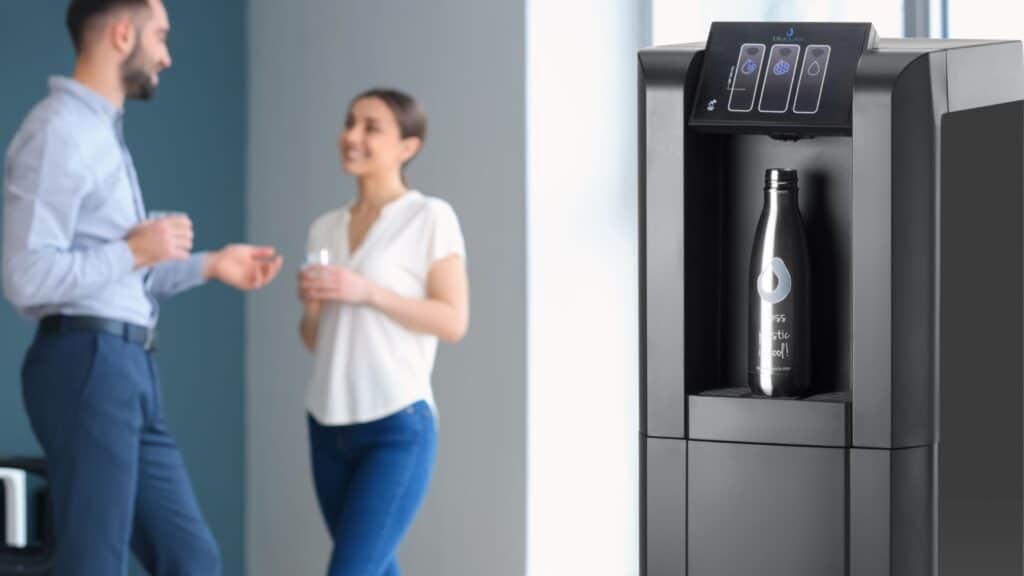
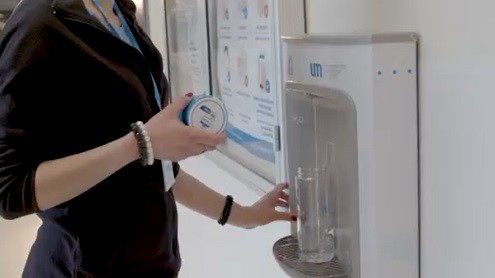
Incorporating drinking water stations and tap water dispensers into building designs can be part of a greater commitment to sustainable building practices. This can influence a building's ability to achieve sustainable building certifications and awards.
There is also an economic aspect. Using tap water supplied by dispensers can help reduce the costs associated with buying bottled water, which can benefit both the building budget and the users. With this in mind, facilities that are not only environmentally friendly but also economical are being chosen more often by target audiences and demanded by investors.
Consequently, drinking water stations and tap water dispensers play an important role in creating a positive image for buildings and facilities, both in terms of user comfort and environmental concerns. They are part of sustainable and health-friendly practices that contribute to the positive perception and value of buildings. Therefore, it is worthwhile to explore this issue and learn about practical and proven solutions to make your project more functional, environmentally friendly and attractive.
In this section you will find a range of practical information related to our solutions. In the articles, we share our experience, discuss implementation steps and highlight good practices. It is a reliable source of information and advice on the provision of drinking water in public spaces, the legal regulations in this area, the benefits of installing drinking water dispensers and the technological aspects in this field.
We look forward to reading!

Drinking water is a fundamental element of life and access to it is a key factor for a healthy lifestyle. In the context of public projects, especially those related to leisure, sports and recreation sites, drinking water resources should be treated as an integral part of the infrastructure. Such an approach not only promotes public health, but also greatly enhances the potential and attractiveness of places by encouraging active outdoor pursuits.
Access to clean drinking water is a key element in maintaining a healthy lifestyle. Therefore, the inclusion of drinking water spas in public projects is becoming an important aspect of keeping the public healthy.
Places such as parks, sports grounds or recreational areas often attract crowds of people, especially during the summer. Access to drinking water in these areas is becoming not only a convenience, but also an essential part of looking after public health.
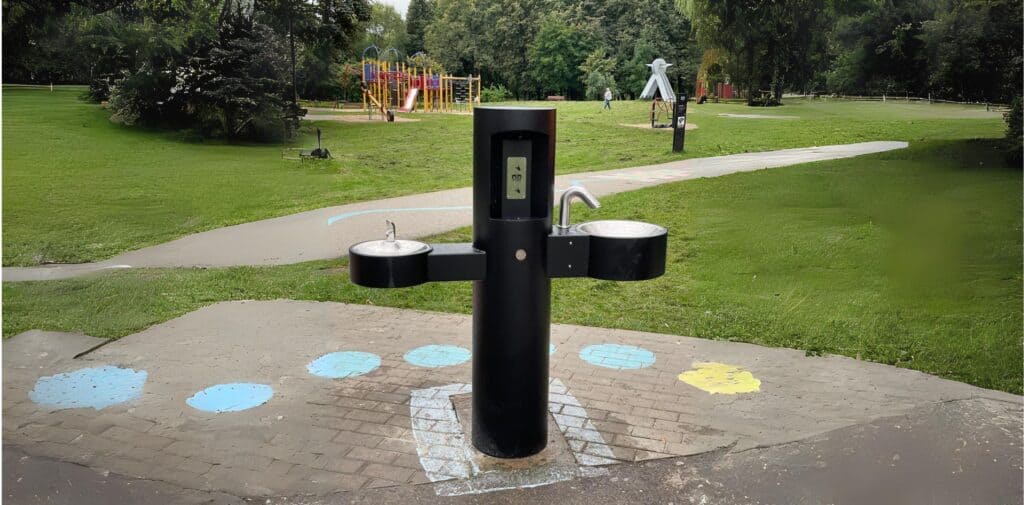
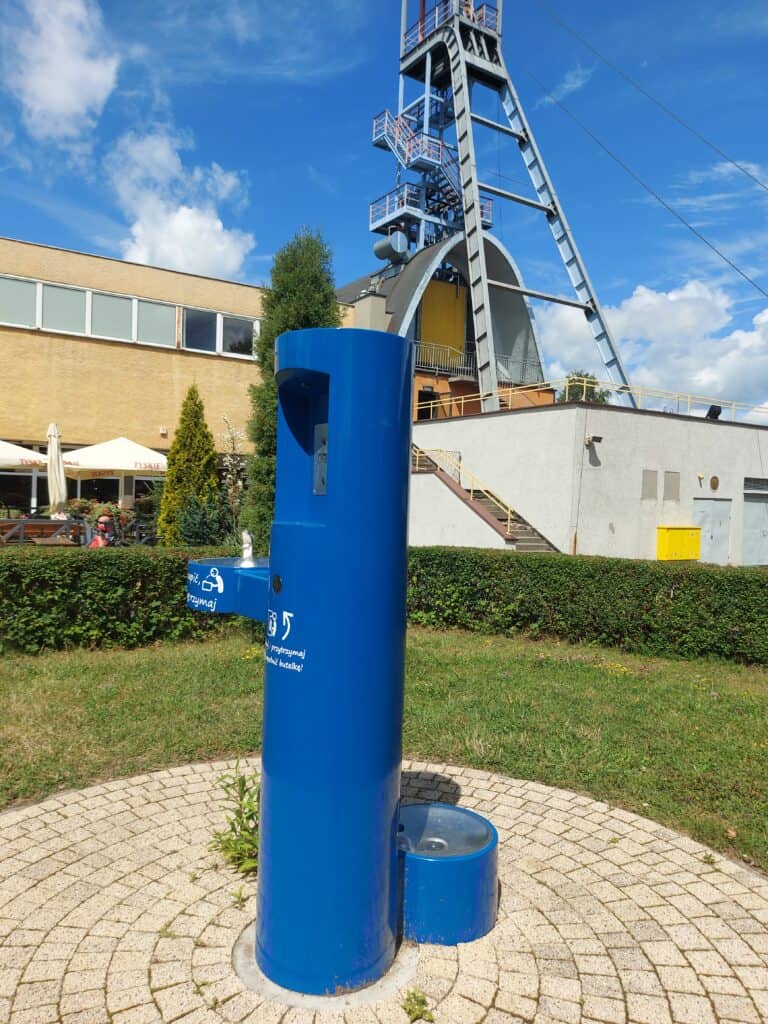
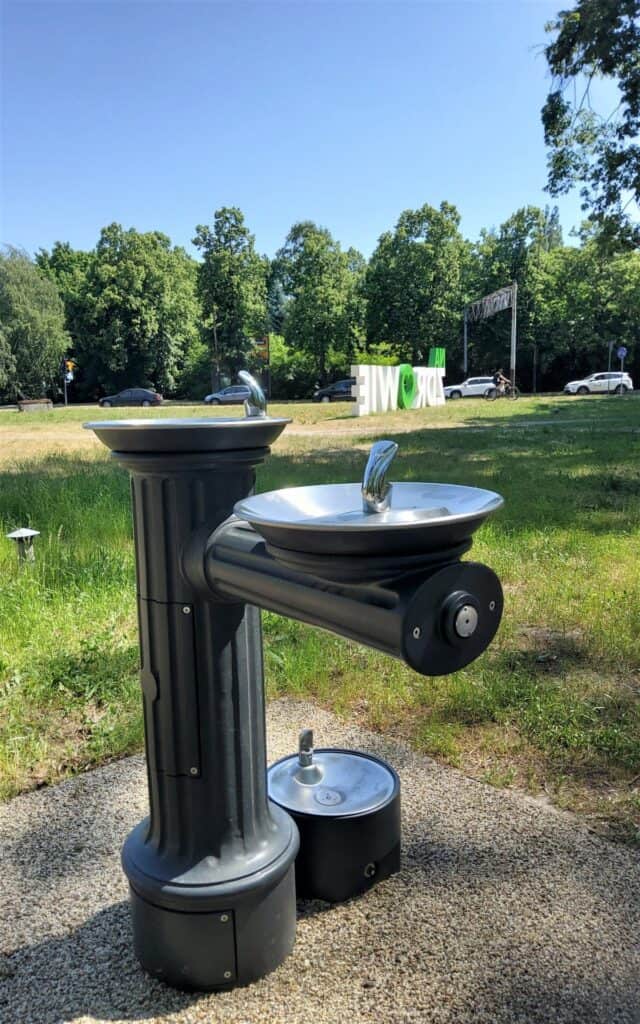
The introduction of drinking water springs into public projects significantly increases the potential of these places. People are keen to use a space that offers them the opportunity not only to be physically active, but also to stay hydrated. This is particularly important in the case of sports facilities, where intense physical activity requires regular fluid replenishment.
Public projects equipped with drinking water springs become more attractive to local communities and visitors. Easy access to water is not only a health issue, but also an element of comfort that makes people more willing to spend time in open spaces. This in turn affects the reputation of a place, attracting new visitors and potentially attracting new investment.
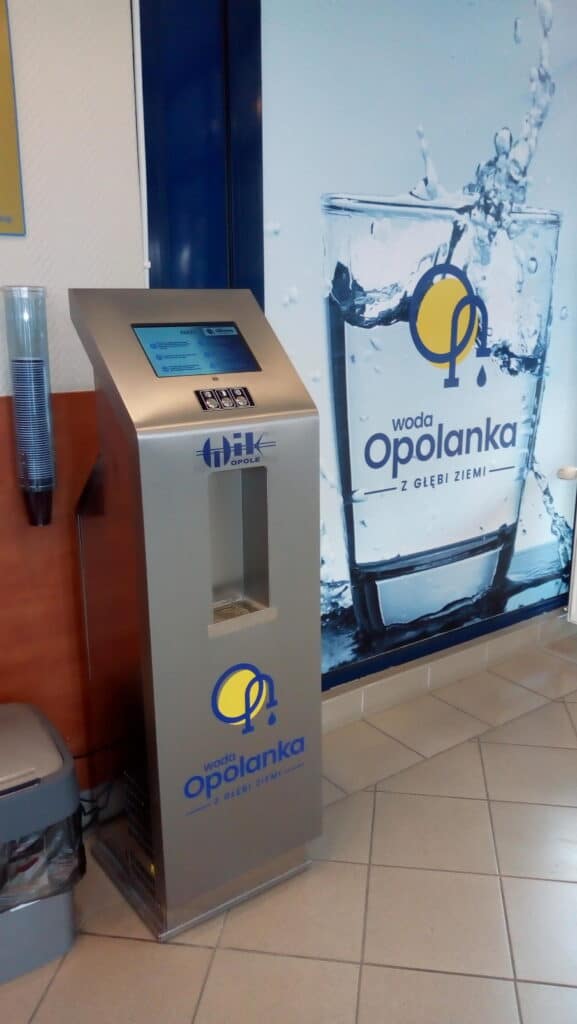
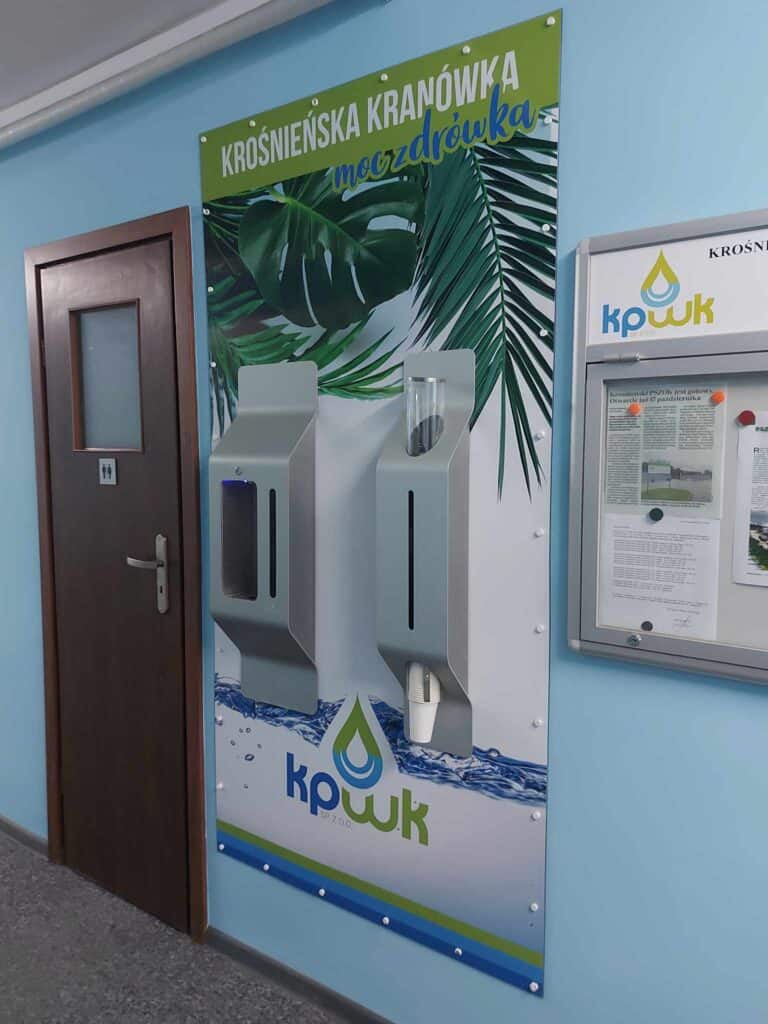
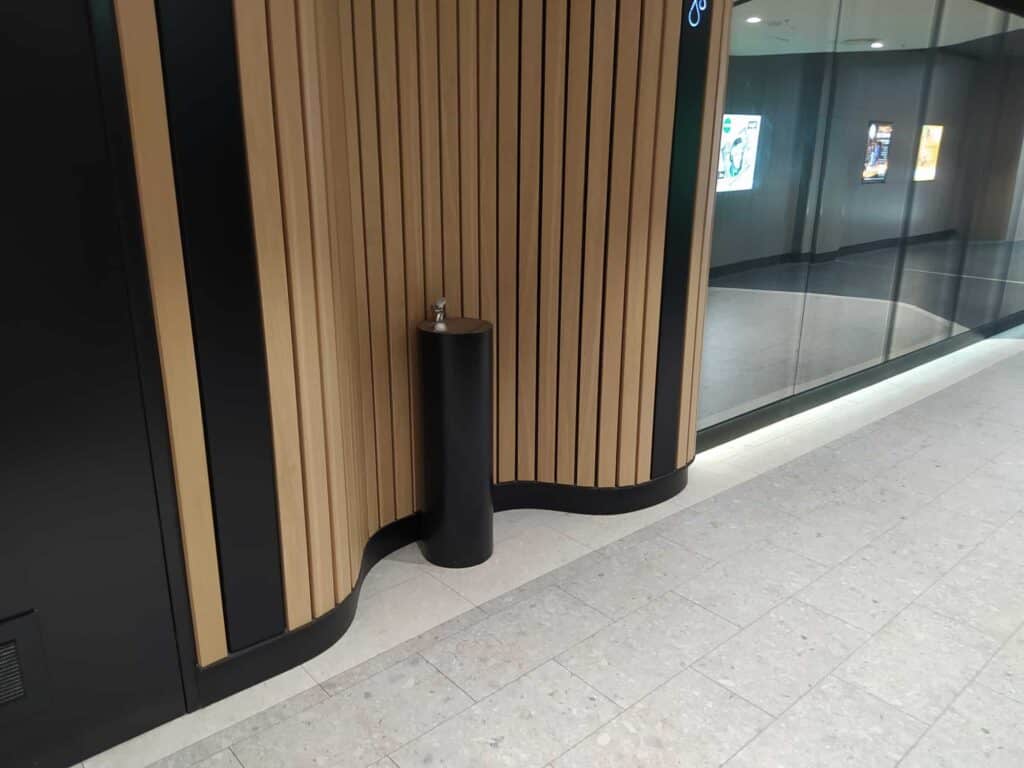
Additionally, promoting healthy lifestyles by providing access to drinking water can have a positive impact on public awareness and education about the importance of hydration. Public places become a platform for health education, inspiring the community to make informed choices about their health.
Incorporating drinking water springs into public projects for places of rest, sport and recreation is an investment in public health and the development of local communities. The availability of drinking water not only increases the potential of these places, but also makes them more attractive to different social groups. Designers and public decision-makers should therefore take these aspects into account when planning and implementing infrastructure to create places that foster active lifestyles and strengthen social ties.
In this section you will find a range of practical information related to our solutions. In the articles, we share our experience, discuss implementation steps and highlight good practices. It is a reliable source of information and advice on the provision of drinking water in public spaces, the legal regulations in this area, the benefits of installing drinking water dispensers and the technological aspects in this field.
We look forward to reading!

It is an obvious fact that water is a life-giving resource for every human being, regardless of age. However, for children and young people, drinking clean water plays an extremely important role in maintaining health, concentration, adequate development and overall wellbeing.
Firstly, water plays a key role in keeping the body functioning properly. Children and adolescents, due to their fast metabolism and active lifestyles, need adequate amounts of water to ensure proper hydration of the body. Drinking enough water helps avoid dehydration, which can lead to fatigue, decreased energy and impaired concentration.
In addition, regular water consumption is crucial for the concentration and cognitive function of children and adolescents. Studies show that even slight dehydration can negatively affect concentration, learning and memory. Water helps to keep the brain in optimal condition, which in turn promotes better learning and more effective mental work.



In addition, drinking clean water promotes the proper development of children and adolescents. Water is essential for maintaining the correct electrolyte balance, which is crucial for the growth and development of the body. Regular consumption of water also supports the proper functioning of the digestive system and helps maintain healthy skin and hair.
Finally, drinking water has a positive effect on the overall wellbeing of children and young people. A properly hydrated body is more resistant to infections, can cope more easily with stress and has more energy to perform daily activities. Water is a natural source of cleansing the body of toxins, which promotes health and vitality.
In conclusion, the drinking of clean water by children and young people is vital for their health, concentration, development and overall wellbeing. It is therefore important to encourage the younger generations to drink water regularly and to ensure that they have easy access to this valuable drink. The installation of water dispensers on school premises is one such incentive.